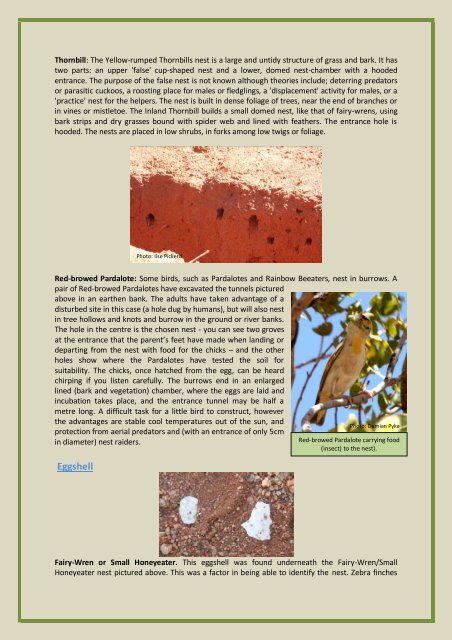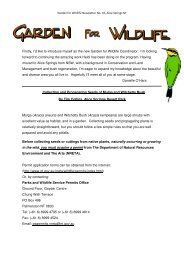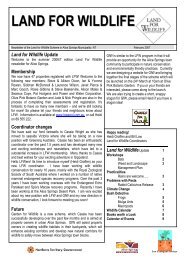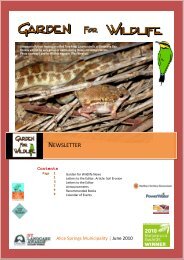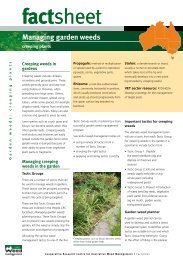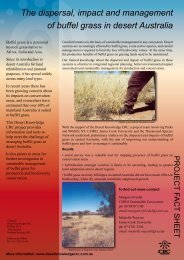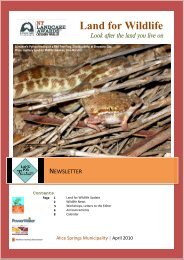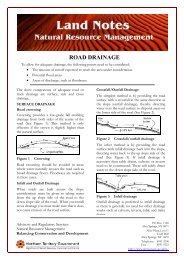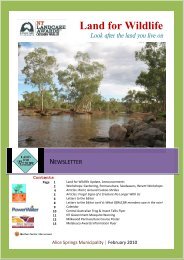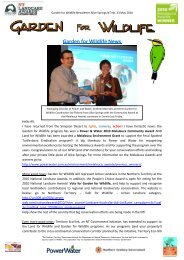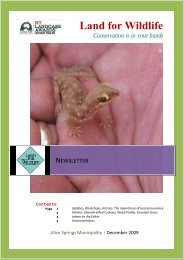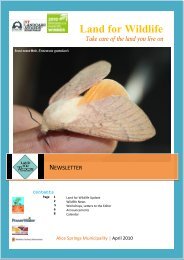Identifying Nests, Tracks, Scats, Burrows, & Other Signs
Identifying Nests, Tracks, Scats, Burrows, & Other Signs
Identifying Nests, Tracks, Scats, Burrows, & Other Signs
Create successful ePaper yourself
Turn your PDF publications into a flip-book with our unique Google optimized e-Paper software.
Thornbill: The Yellow-rumped Thornbills nest is a large and untidy structure of grass and bark. It has<br />
two parts: an upper 'false' cup-shaped nest and a lower, domed nest-chamber with a hooded<br />
entrance. The purpose of the false nest is not known although theories include; deterring predators<br />
or parasitic cuckoos, a roosting place for males or fledglings, a 'displacement' activity for males, or a<br />
'practice' nest for the helpers. The nest is built in dense foliage of trees, near the end of branches or<br />
in vines or mistletoe. The Inland Thornbill builds a small domed nest, like that of fairy-wrens, using<br />
bark strips and dry grasses bound with spider web and lined with feathers. The entrance hole is<br />
hooded. The nests are placed in low shrubs, in forks among low twigs or foliage.<br />
Red-browed Pardalote: Some birds, such as Pardalotes and Rainbow Beeaters, nest in burrows. A<br />
pair of Red-browed Pardalotes have excavated the tunnels pictured<br />
above in an earthen bank. The adults have taken advantage of a<br />
disturbed site in this case (a hole dug by humans), but will also nest<br />
in tree hollows and knots and burrow in the ground or river banks.<br />
The hole in the centre is the chosen nest - you can see two groves<br />
at the entrance that the parent’s feet have made when landing or<br />
departing from the nest with food for the chicks – and the other<br />
holes show where the Pardalotes have tested the soil for<br />
suitability. The chicks, once hatched from the egg, can be heard<br />
chirping if you listen carefully. The burrows end in an enlarged<br />
lined (bark and vegetation) chamber, where the eggs are laid and<br />
incubation takes place, and the entrance tunnel may be half a<br />
metre long. A difficult task for a little bird to construct, however<br />
the advantages are stable cool temperatures out of the sun, and<br />
protection from aerial predators and (with an entrance of only 5cm<br />
in diameter) nest raiders.<br />
Eggshell<br />
Photo: Ilse Pickerd<br />
Photo: Damian Pyke<br />
Red-browed Pardalote carrying food<br />
(insect) to the nest).<br />
Fairy-Wren or Small Honeyeater. This eggshell was found underneath the Fairy-Wren/Small<br />
Honeyeater nest pictured above. This was a factor in being able to identify the nest. Zebra finches


